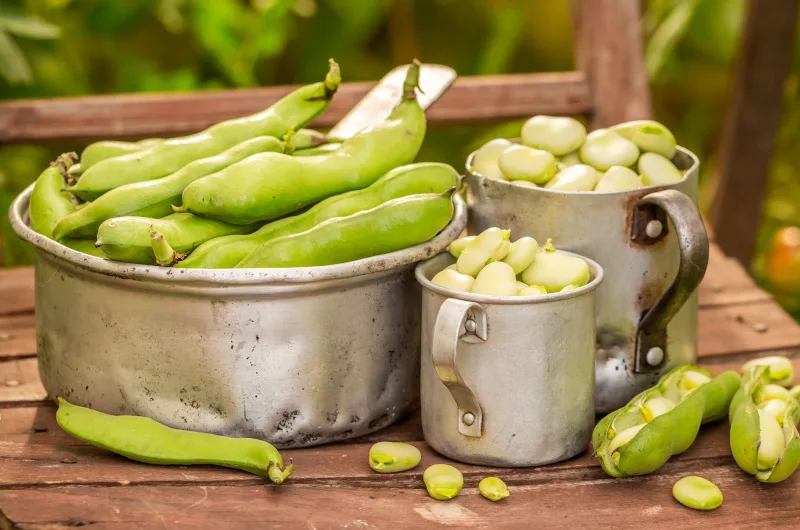How To Grow Broad Beans
Broad beans, also known as fava beans, are a popular and nutritious addition to any vegetable garden. These versatile legumes not only enrich the soil with nitrogen but also yield delicious and protein-rich beans that can be used in a variety of culinary creations. Whether you’re a seasoned gardener or just starting out, growing broad beans can be a rewarding experience. In this guide, we’ll walk you through the process of cultivating these hearty plants and address some common questions along the way.
Planting and Growing Broad Beans:
- Selecting the Right Location: Choose a sunny spot in your garden with well-draining soil. Broad beans thrive in full sunlight, so find a location that receives at least 6-8 hours of direct sunlight each day.
- Sowing Seeds: Broad beans can be directly sown in the garden in early spring or autumn. If you’re planting in spring, wait until the soil has warmed up a bit. Plant the seeds about 1-2 inches deep and 4-6 inches apart in rows that are spaced about 18 inches apart. Autumn plantings will produce young plants which should overwinter, producing an earlier crop the following year, but covering the plants with fleece before prolonged extreme cold or snow may help increase the plant’s survival rate.
- Watering: Keep the soil around spring sowings consistently moist but not waterlogged. Water deeply when the top inch of soil feels dry. Avoid overhead watering to prevent the development of fungal diseases.
- Support: As the plants grow, they may need support to prevent them from toppling over due to their height. You can use stakes or trellises to provide the necessary support, or posts on the corners of the bed, with a row or two of string run around the entire bed.
- Fertilising: Broad beans are nitrogen-fixing plants, which means they enrich the soil with nitrogen. However, you can give them a boost by applying a balanced fertiliser when they start flowering.
Broad Bean FAQs:
Broad beans are ready to be harvested when the pods are plump and the beans inside have reached a decent size. The pods should be bright green and slightly firm to the touch. You can also feel the beans through the pod – they should be firm and not too soft.
Blackfly, also known as aphids, can be a common issue with broad beans. To treat them, spray the affected plants with a strong jet of water to dislodge the aphids. You can also introduce natural predators like ladybirds or lacewings. In severe cases, an insecticidal soap or neem oil spray can help control the infestation.
Broad beans are usually sown in early spring or autumn when the temperatures are cooler. Sowing them later in the year might not yield the best results, as they prefer milder weather. However, a recently introduced variety, Luz de Otono can be sowed in July to produce a crop in late autumn.
Thyme or Summer Savory are good options to companion plant with broad beans, as they both give off compounds which can help to deter blackflies.
In conclusion, growing broad beans is a satisfying endeavour that rewards you with both a bountiful harvest and improved soil health. By following these guidelines and addressing common concerns like harvesting, pest management, and companion planting, you’ll be well on your way to cultivating thriving broad bean plants in your own garden. So roll up your sleeves, get your hands dirty, and enjoy the journey of nurturing these versatile legumes from seed to table.



